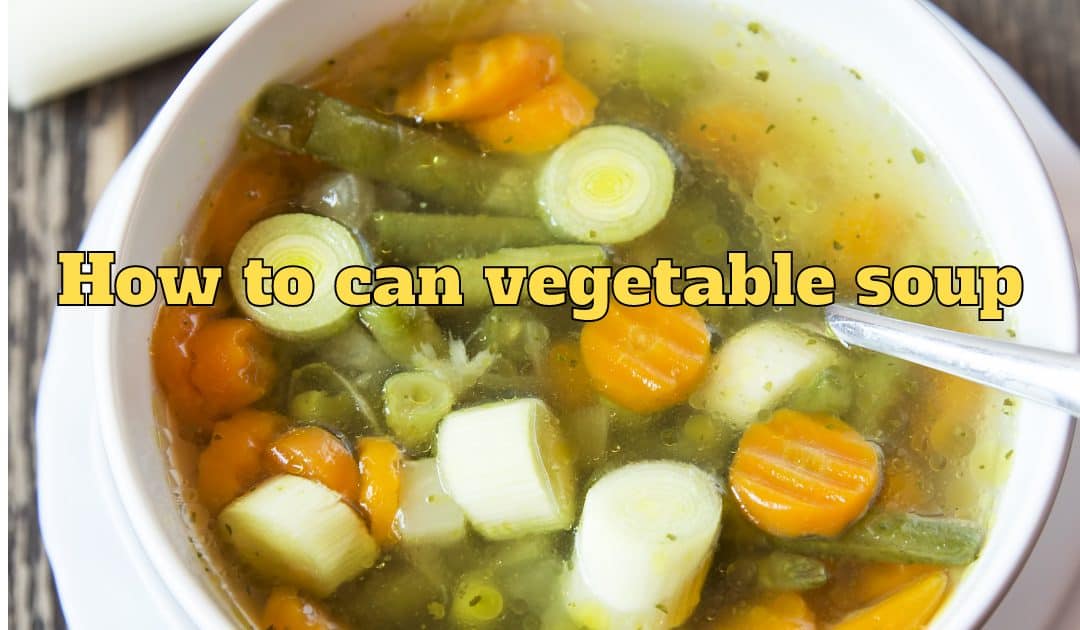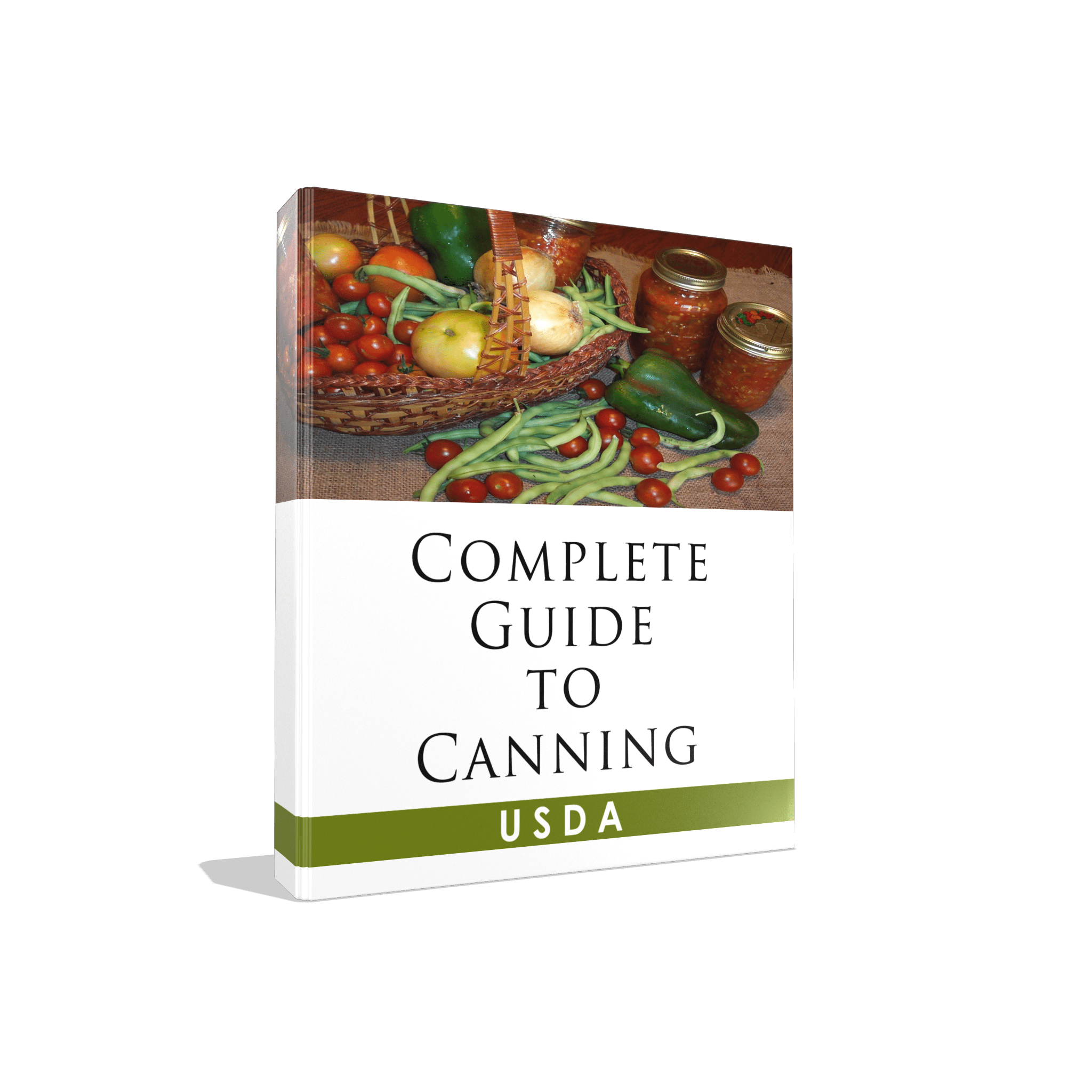Pressure Canning Vegetable Soup: What You Need To Know
There’s no need to go out to buy soup when you can make your own at home. In this blog post, we’ll show you how to pressure can vegetable soup, using simple and easy-to-follow steps. By following these simple steps, you can create delicious and nutritious soup that will ward off the cold weather blues. Not only will you be able to provide a healthy meal for yourself and your family, but you’ll also be helping the environment by reducing the amount of waste that is produced during food production. So get started today and enjoy some delicious home-canned soup!
Your home canning may start as a hobby, but the great tasting food and money savings can quickly turn it into a healthy addiction. Just remember to always use protection when moving the hot jar from the canner. A burn from the hot glass will not soon be forgotten.
Why Make Home-Canned Soup
Making home-canned soup can be a healthy and sustainable way to store food. Not only is it less wasteful, but it can also be loaded with vitamins, minerals and other nutrients. Plus, pressure canning is the safest way to preserve food in a sealed environment. All you need is a pressure canner and jars–no special equipment required! Just make sure you follow the guidelines for pressure canning, and you’re good to go. Home-canned soup can last for up to three years if stored properly. So, what are you waiting for? Give pressure canning vegetable soup a try today!
My favorite recipe for vegetable soup
- Yellow onion: Or you can use sweet onion or white onion instead.
- Fresh garlic cloves: Or substitute dried garlic powder if desired.
- Gold potato: I like the buttery taste and texture of Yukon gold potatoes, but you can also use red potatoes, white potatoes, or russet potatoes.
- Carrots
- Zucchini: Or substitute yellow summer squash.
- Tomato: I use medium vine-ripened tomatoes for this recipe. However you can replace with a 15 oz. can dice tomatoes if needed.
- Green beans
- Sweet corn: You will need about 2 ears of corn for this recipe. If fresh corn is not available, you could substitute with canned corn or frozen corn instead. I purchase organic corn when possible.
- Okra: Is another great fresh item from your garden that can be used.
- Lima Beans: Another great garden to pot option.
- Peas: I often like to add fresh picked peas, or sweet peas.
- Fresh herbs: I use basil and parsley, but use your own favorite.
Combine all those ingredients and substitute as needed for the best homemade vegetable soup. Since you are canning using the fresh ingredients from your summer garden will insure the very best vitamins and minerals.
How to can vegetable soup
Making soup can be a fun and easy project, but it can be daunting if you’re not familiar with pressure canning. This guide will teach you everything you need to know to can vegetable soup successfully. First, you’ll need the supplies listed above, including a pressure canner, canner pot, canning lid and ring clamp, and tongs or a ladle. Then, start by cleaning and prepping your pressure canner according to the manufacturer’s instructions. Next, load the ingredients into the pressure canner in an order that makes sense based on how many jars you’re using – start with the heaviest items first. Fit the pot lid securely onto the pressure cooker body and adjust for atmospheric pressure if needed. Process filled jars in a pressure canner, at 10 pounds pressure for weighted canners or 11 pounds for dial-gauge canners. Enjoy your delicious and healthy vegetable soup!
Ingredients
In order to make a healthy and delicious vegetable soup, pressure canning is the only way to go.
To ensure a safe batch of soup, make sure you get the correct pressure canner for your needs – this will be a dial-gauge pressure canner.
Be especially careful when following the recipe, as mistakes can lead to harmful bacteria growing in your food. Follow it carefully and use only the correct ingredients – never substitute something else for what’s called for in the recipe! Adjusting altitude may also be necessary if you live at an altitude above 1,000 meters (3,281 feet).
Instructions
If your canning vegetables, it’s important to follow the recipe and use a pressure canner that is certified safe. We recommend the All American Pressure Canners. These canners have a metal on metal seal instead of the rubber gasket of cheaper canners, meaning they are more reliable and less likely to fail.
Food Safety when Canning
Home Canning and Botulism
What You Need to Know
- You cannot see, smell, or taste the toxin that causes botulism, but taking even a small taste of food containing the toxin can be deadly.
- Follow these steps to protect yourself and others from botulism:
- Always use proper canning techniques.
- If you have any doubt about whether the food was canned properly, throw it out.
- Throw out any canned food with signs of contamination. Never taste food to see if it’s safe.
- Botulism is an emergency. Seek medical help immediately if you or someone you know has symptoms.
Home canning is an excellent way to preserve garden produce and share it with family and friends. But it can be risky—or even deadly—if not done correctly and safely. Home-canned vegetables are the most common cause of botulism outbreaks in the United States. Learn how you can preserve vegetables—as well as fruits, meats, seafood, and more—correctly and safely.
What is botulism?
Botulism is a rare but serious illness caused by a toxin that attacks the body’s nerves. It can cause difficulty breathing, muscle paralysis, and even death. The toxin is made most often by Clostridium botulinum bacteria. Improperly canned, preserved, or fermented foods can provide the right conditions for the bacteria to make the toxin.
You cannot see, smell, or taste the toxin, but taking even a small taste of food containing it can be deadly.
Botulism is a medical emergency. If you or someone you know has symptoms of botulism, contact your doctor or go to the emergency room immediately.
How can I help prevent botulism from home-canned foods?
You can protect yourself, your family, and others by following these tips.
Get your own copy of the USDAs guide to home canning for complete details and support.
Frequently Asked Questions
What are the benefits of pressure canning vegetable soup?
Pressure canning vegetable soup is a great way to preserve the nutrients and flavor of your vegetables. It can also lock in vitamins, minerals, and antioxidants, making its shelf stable for up to 36 months. Lastly, pressure canning vegetable soup will create healthy and appetizing soups that are perfect for freezer cooking or serving cold.
How does pressure canning vegetable soup work?
Pressure canning vegetable soup is a great way to store vegetables for a long time. pressure canning preserves vegetables by using high pressure and temperatures, which kills bacteria and destroys enzymes. This process helps in retaining nutrients, texture, color, and flavor.
How do you make vegetable soup in a pressure canner?
To can vegetable soup in a pressure canner, follow these simple steps:
- Wash and cut the vegetables into small pieces.
- Prepare the soup for canning by pouring it into your Ball or other brand jars. Make sure to leave 1 inch of headspace at the top of each jar.
- Allow jars of soups to cool some before moving with tongs or heat proof gloves for safety.
- Make sure that your pressure canner is adequately calibrated, and that it has been used previously without any issues.
- Place the jars of soup into the pressure canner, making sure that they are not touching each other or the headspace of the canner.
- Set the canner pressure to 10 pounds and wait for the canner process filled jars in a pressure canner, at 10 pounds pressure for weighted canners or 11 pounds for dial-gauge canners, for 75 minutes for quarts or 60 minutes for pints.
Does vegetable soup have to be pressure canned?
Yes, pressure canning is the only way to make sure your veggies are cooked perfectly and sealed in a safe manner.
Pressure canning can also be used as a way of preserving food – meaning that you can store vegetable soup without preservatives in a safe and healthy manner. Many people who used to freeze soup and learned to pressure can now prefer the flavor and nutritional benefits of canned soups.
Some tips for Pressure Canning Vegetable Soup:
– Choose low-sodium vegetable broth or bouillon instead of beef or chicken broth. This will help to reduce the amount of sodium in the soup.
– Use less water so that the soup can pack more nutrients and vitamins.
– If desired, add more vegetables – like potatoes, carrots, celery – to the soup during pressure canning. Adjust the heat level according to your preferences.
What supplies do you need?
Quart or Pint Jars
Brands similar to Ball jars are popular with canners
A pressure canner (we recommend the All American Brand)
Ladle
Wide mouth funnel to fit jars
How do you can vegetable soup in a pressure canner?
The easiest and simplest way to can vegetables in a pressure canner is by using a raw pack method. This simply means cooking your vegetables with just enough water so they won’t stick together, then packing them into jars. Make sure that your vegetables are cut into small pieces for even cooking and avoid adding salt or sugar. You should start checking your altitude before starting to pressure can any vegetable soup as this will affect the time it takes for the jars to seal correctly.
Is it better to use fresh or canned vegetables in soup?
Using either fresh or canned vegetables for soup is fine. The main difference is that you’ll need a little more water when canning with canned veggies. Once the soup has been canned, let it cool down before opening it up. This will ensure safety during handling.
Conclusion
Making your own home-canned soup is a great way to save money and enjoy a delicious, nutritious soup without any of the fuss. Follow these simple steps to can vegetable soup like a pro!


